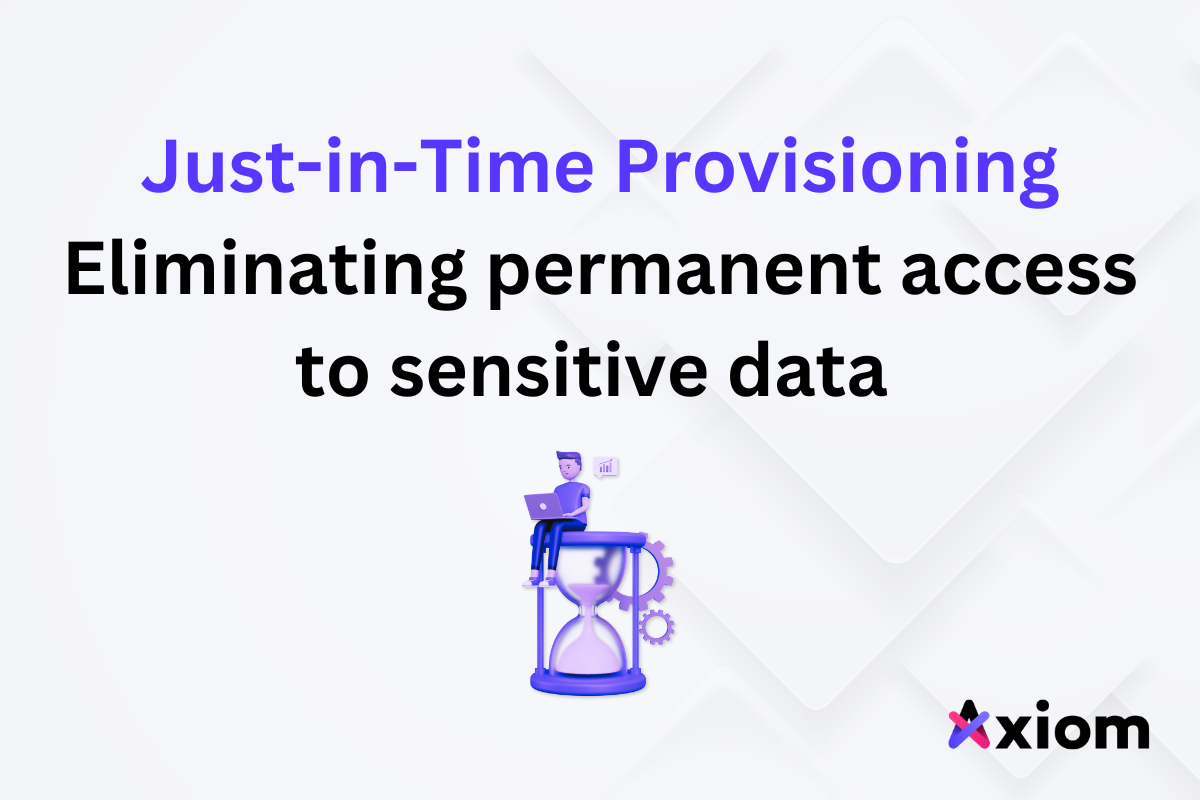As organizations continue to adopt dynamic cloud-based solutions as enablers and drivers of their business, the need for effective permissions management becomes increasingly critical.
Traditional methods of permissions management can be time-consuming, prone to human error, and may leave organizations vulnerable to security risks. It’s no suprise why we are witnessing to a dramatic increase in identity-based threats and attacks, 74% of all breaches include the human element through Error, Privilege Misuse, Use of stolen credentials or Social Engineering (Verizon DBIR 2023).
However, dynamic permissions management and just-in-time (JIT) access offer a new approach that can significantly enhance cloud security posture and increase productivity.
Gartner defines Identity and Access Management (IAM) is a security and business discipline that includes multiple technologies and business processes to help the right people or machines to access the right assets at the right time for the right reasons, while keeping unauthorized access and fraud at bay.
A world with dynamic permissions management and no permanent access to the resources that hold sensitive data, allows organizations to manage access controls more effectively and achieve the desired state of pure and scalable least privilege and protect from those vulnerabilities.
The implementation of dynamic permissions management with Just-in-Time provisioning allowing users to request access to resources or applications on a temporary basis. This means that users will have the scoped access that they need to perform their job function, only when they need them, reducing the risk of unauthorized access and limiting the impact of potential security breaches. JIT access enables organizations to provide access on-demand, reducing the administrative burden of managing permissions and improving security compliance.
There are several benefits to dynamic permissions management and JIT access, including:
- Enhanced Security: Dynamic permissions management and JIT access reduce the risk of data breaches resulting from compromised user credentials, unauthorized access, or human error.
- Reduced Administrative Burden: With automated JIT access, administrators do not need to continually manage permissions, reducing the administrative burden associated with traditional access management processes.
- Improved Compliance: Dynamic permissions management and JIT access can help organizations meet regulatory compliance requirements, such as the General Data Protection Regulation (GDPR) and the Health Insurance Portability and Accountability Act (HIPAA).
Let’s elaborate on three options to achieve just-in-time access:
- Homegrown Tools
Developing custom-made just-in-time access tools in-house allows organizations to have complete control over the functionality and customization of the system. This option requires dedicated development resources and a thorough understanding of the organization’s infrastructure and access requirements.
Advantages:
- Customization: Tailoring the tool to suit specific infrastructure and security needs.
- Integration: Seamless integration with existing authentication and authorization systems.
- Control: Complete control over the development and maintenance of the tool.
Challenges:
- Development Time: Creating an effective, secure, and user-friendly tool can be time-consuming.
- Maintenance: Ongoing maintenance and updates to keep up with evolving security threats.
- Expertise: Requires expertise in security best practices to ensure robustness.
- Manual Work
A low-tech approach to just-in-time access involves using manual processes to grant and revoke access. This might involve communication via email, ticketing systems or collaboration tools to request access and manually adjusting permissions.
Advantages:
- Immediate Implementation: No need to set up complex tools or platforms.
- Not paying on licenses: No additional costs associated with tools or platforms.
Challenges:
- Security Risks: Human errors can lead to access being granted for longer than necessary or to unauthorized individuals.
- Lack of Audit Trail: Difficult to track and audit access effectively.
- Scalability: Not feasible for larger organizations with numerous users and resources.
- Waste of time: Hiring a dedicated team or person to manage permissions, a tedious process that no one loves to do.
- Using Permissions Management Platform
A permissions management platform provides a centralized and automated way to manage access controls for various resources and services.
Advantages:
- Automation: Efficiently grant and revoke access based on predefined rules and schedules.
- Auditability: Comprehensive audit logs and reports to track access history and changes.
- Security: Enforce the principle of least privilege, reducing the attack surface.
Challenges:
- Cost: Acquiring and maintaining a permissions management platform can involve additional expenses.
- Lack of control: Limited control over the progress of the features and capabilities of the tool.
Each option has its own set of advantages and challenges. While homegrown tools offer customization and control, they require significant development and maintenance efforts. Manual work might be suitable for smaller organizations with limited resources, but it comes with security risks and scalability challenges. Utilizing a permissions management platform provides automation and auditability, but it requires careful planning, integration, and financial considerations. Ultimately, the best approach will depend on the organization’s size, infrastructure complexity, and security requirements.
In conclusion
Dynamic permissions management and JIT access offer a new approach to cloud permissions management that enhances security, reduces administrative burden, and improves compliance, and we have multiple options available. In a world with no permanent cloud access, organizations must embrace these new solutions to reduce the risk of data breaches and stay ahead of emerging security threats.
Axiom is a dynamic permission management platform that automates Cloud & SaaS permissions with Just-in-Time provisioning to create frictionless least-privilege access workflow that minimizes risk and increases productivity.
Book a demo to learn more






